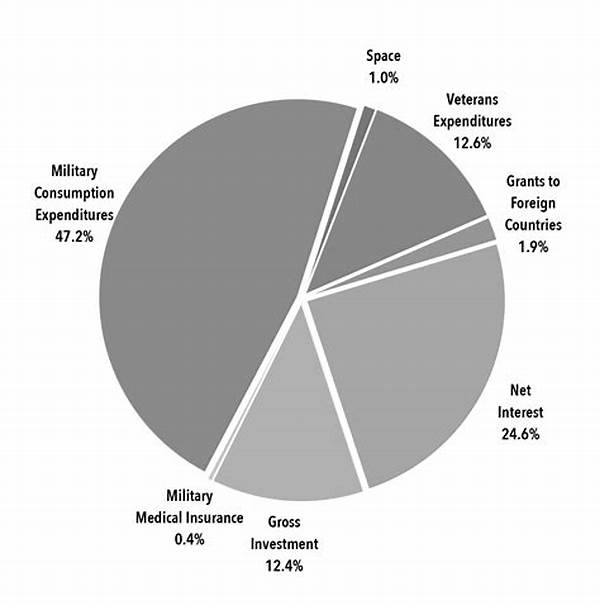In recent discussions on national security, the allocation of defense budgets has become a critical point of analysis. Understanding the nuances of defense spending distribution is essential for policymakers, analysts, and stakeholders, seeking to ensure that the allocation aligns with both national needs and global expectations. This article explores the myriad components influencing defense spending distribution through a structured examination of various key factors.
Economic Considerations
The economic landscape plays a pivotal role in shaping defense spending distribution. Countries must assess their fiscal capacities, as maintaining a robust defense system requires significant financial commitment. Governments often prioritize defense allocations based on the overall economic health, making adjustments following economic growth or downturns. The balance between maintaining adequate defense capabilities and ensuring economic stability is delicate, with implications for both short-term and long-term national security strategies. Factors influencing defense spending distribution in the economic realm include inflation rates, budget deficits, and competing financial priorities. Moreover, the global economic climate can have ripple effects across national defense budgets, further complicating allocation strategies.
Strategically, nations must weigh their defense expenditures against other critical investments, such as education, healthcare, and infrastructure. This complex decision-making process requires careful consideration of economic forecasts and fiscal responsibility. Ultimately, the sustainability of defense budgets depends on a balanced approach that harmonizes national security imperatives with economic limitations. By doing so, nations ensure that their defense spending distribution remains effective and sustainable.
Geopolitical Dynamics
Geopolitical factors significantly influence how defense spending is distributed. Neighboring threats, alliances, and regional stability are integral considerations. Countries surrounded by hostile entities may prioritize higher spending to maintain defense readiness, drawing from historical and current geopolitical tensions. These dynamics dictate how budgets are allocated internally.
Technological Advancements
Technological advancements have revolutionized military capabilities, necessitating adjustments in defense spending distribution. The development and integration of cutting-edge technologies, such as artificial intelligence and cyber capabilities, demand substantial investment. As these technologies evolve, defense budgets must adapt to support modernization efforts, enhancing both national and international security landscapes.
Legislative and Political Influences
Political and legislative landscapes have substantial bearings on defense spending distribution. Policy shifts, governmental transitions, and legislative priorities determine budget allocations. Policymakers must balance competing interests within governmental structures, navigating complex bureaucratic channels. Consequently, changes in leadership or shifts in legislative focus can precipitate significant reallocations in defense spending.
Strategic Partnerships and Alliances
Strategic partnerships and alliances are pivotal in shaping defense spending distribution. Collaborative defense initiatives often lead to shared investment responsibilities, influencing national budgetary allocations. Such partnerships enable the pooling of resources and intelligence, optimizing defense spending. Moreover, alliance commitments necessitate adherence to certain spending levels, impacting national budgetary frameworks.
Internal Security Requirements
Internal security concerns, encompassing domestic terrorism, civil unrest, and natural disasters, necessitate tailored defense spending distributions. Nations must allocate resources to address internal security needs, balancing them against external threats. The interplay between domestic and international security considerations shapes comprehensive defense budgeting, ensuring national resilience.
Defense Industry Influence
The defense industry exerts considerable influence on defense spending distribution. The relationship between governments and defense contractors shapes budgetary decisions, as industry lobbying and capacity influence spending priorities. This interaction often results in alignment or realignment of defense strategies, ensuring alignment with both national interests and industry capabilities.
Conclusion
In conclusion, the factors influencing defense spending distribution are multifaceted and complex, requiring a nuanced understanding of various domestic and international considerations. Economic conditions, geopolitical dynamics, technological advancements, and political influences each play critical roles in shaping how defense budgets are allocated. Additionally, strategic partnerships, internal security requirements, and defense industry dynamics contribute to this intricate process. Achieving an optimal balance in defense spending distribution necessitates continuous evaluation and adaptation to evolving circumstances. By understanding these various factors, policymakers and stakeholders can ensure that defense budgets are allocated effectively, sustaining both national security and economic stability. Through strategic foresight and collaborative efforts, nations can navigate these complexities, ensuring robust and sustainable defense infrastructure that aligns with global security challenges.





